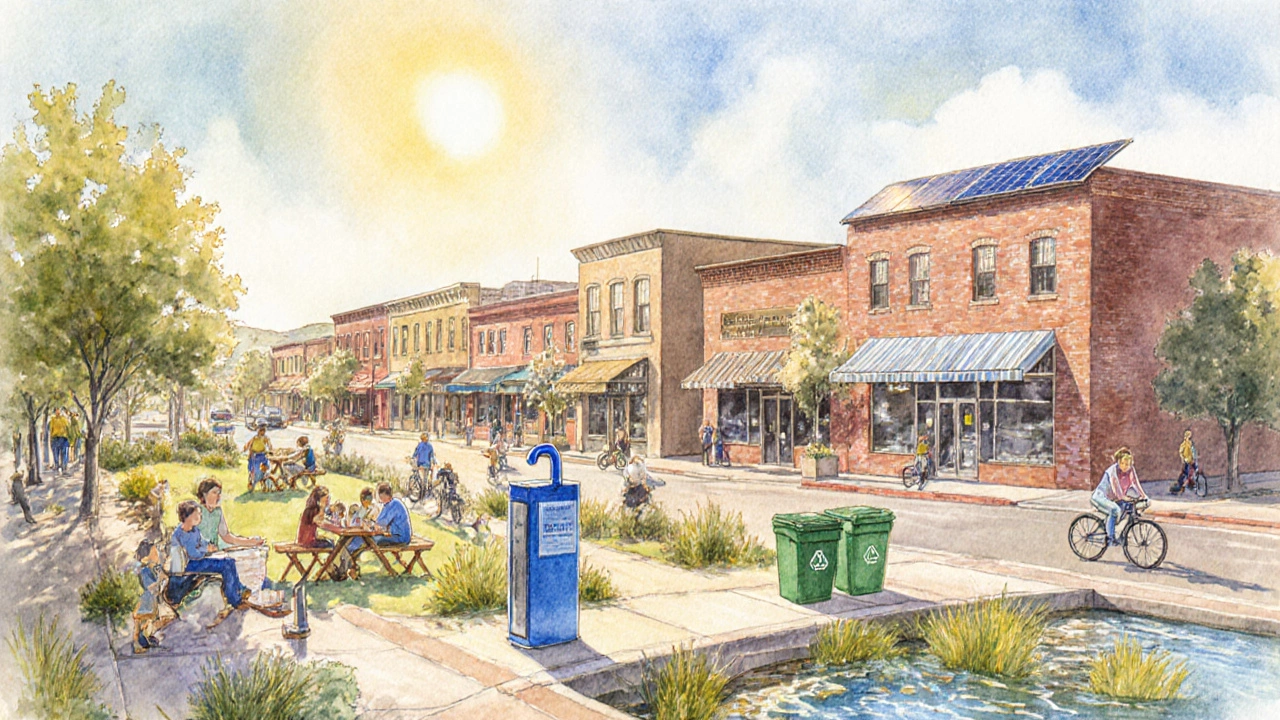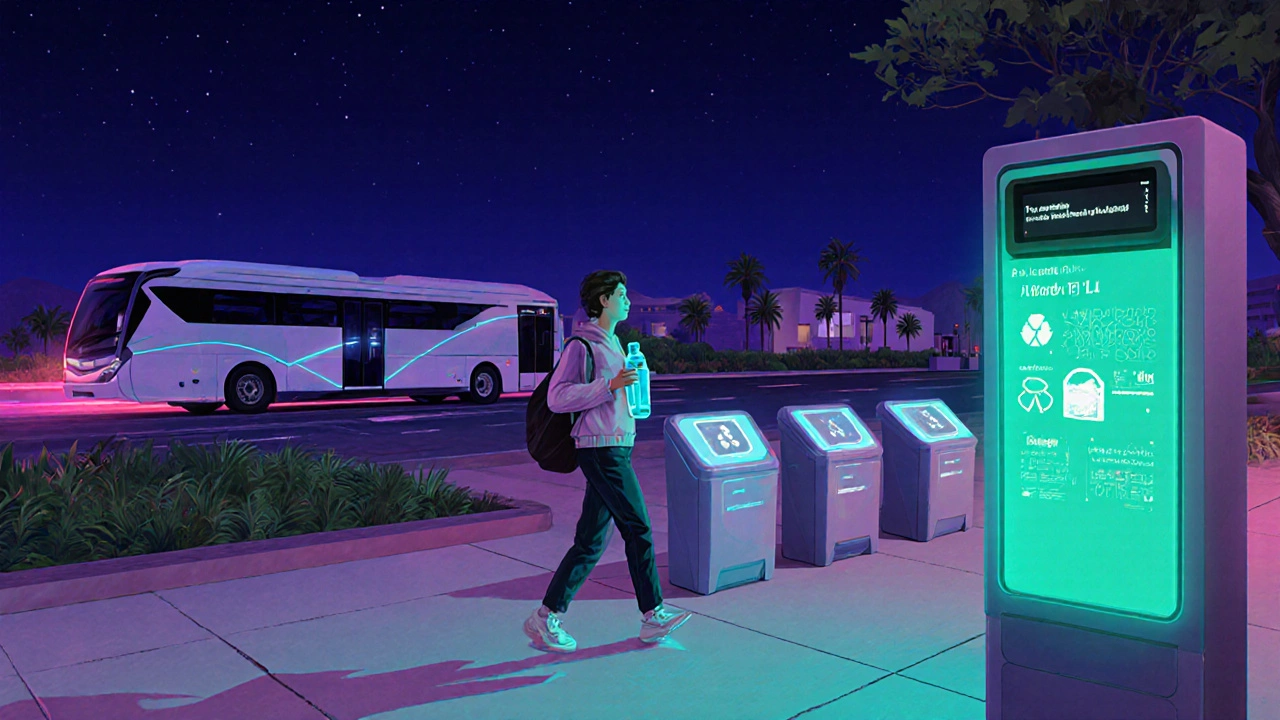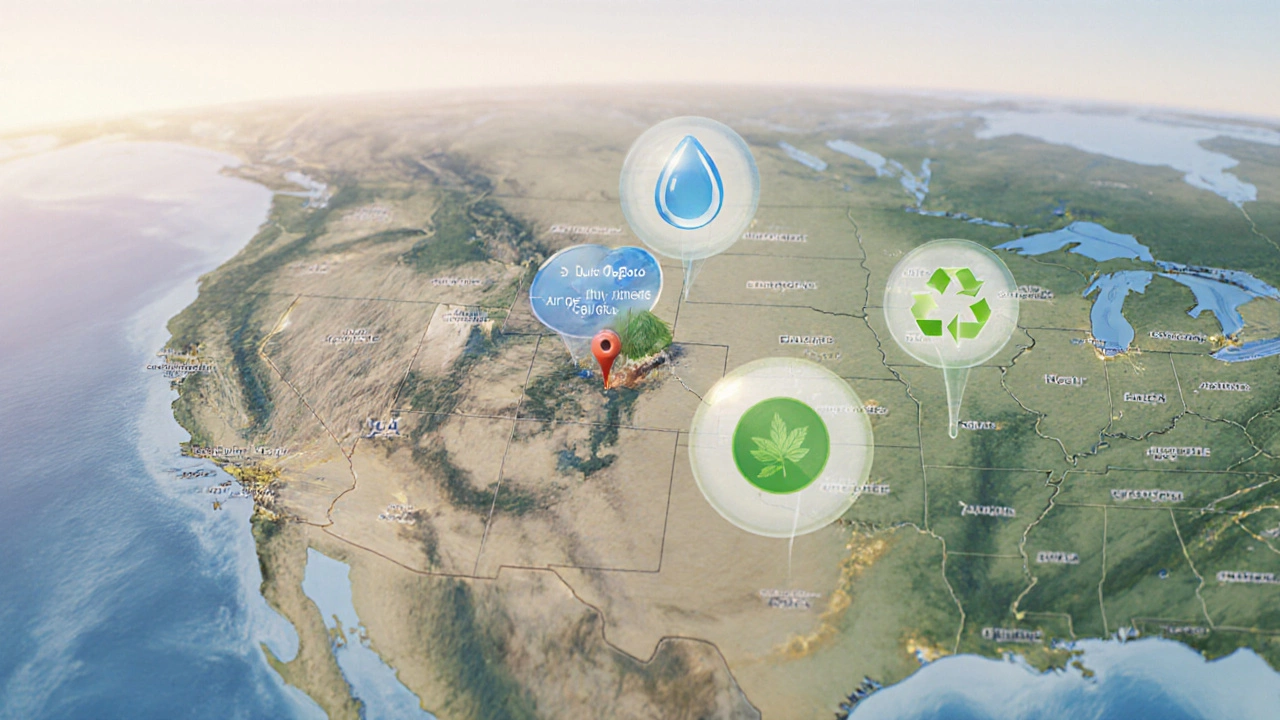US City Cleanliness Calculator
Cleanliness Score Results
Composite Score: 0
City:
Ranking: -
Recommendation:
Metric Breakdown
When you ask yourself, cleanest city US refers to the American municipality that scores highest across air, water, waste and green‑space metrics, the answer isn’t a single static fact-it’s a snapshot of data, policies and everyday habits as of 2025.
Key Takeaways
- SanLuis Obispo, California, tops the 2025 clean‑city ranking.
- Air Quality Index (AQI), water‑purity scores, recycling rates and per‑capita green space are the four core metrics.
- Cities that invest in renewable energy and strict waste‑diversion policies consistently rank higher.
- Travelers can use the ranking to pick destinations that feel fresh, safe and sustainable.
- Local actions-like using refill stations and supporting bike‑share programs-help keep a city clean.
How Cleanliness Is Measured
Environmental analysts combine three public‑data sets:
- Air Quality Index (AQI) scores published by the U.S. Environmental Protection Agency (EPA).
- Water Quality Score derived from EPA’s Safe Drinking Water Act compliance reports.
- Waste Management Index combines recycling rate, landfill diversion and per‑capita waste generation.
Each metric is normalized to a 0‑100 scale, then weighted (40% AQI, 30% water, 30% waste) to produce a composite "Cleanliness Score." Green‑space per resident (parks, trails) is added as a tie‑breaker.
The 2025 Cleanest City - San Luis Obispo, California
SanLuis Obispo (often called SLO) earned a composite score of 92.4. Here’s why:
- Air: Year‑round AQI averages 22, well below the national urban average of 45.
- Water: 99% of its public water system meets or exceeds EPA standards; the city runs a state‑of‑the‑art filtration plant.
- Waste: 68% recycling rate-one of the highest in the country-plus a robust compost program that processes 45% of organic waste.
- Green Space: 23sqft of parkland per resident, compared with the U.S. average of 8sqft.
The city’s commitment to solar power (30% of municipal electricity) and its strict “no‑single‑use‑plastic” ordinance further boost its clean‑living reputation.

Close Contenders: Top Five Cities
| Rank | City | AQI (average) | Water Quality Score | Recycling Rate% | Green Space (sqft per person) | Overall Score |
|---|---|---|---|---|---|---|
| 1 | SanLuis Obispo, CA | 22 | 99 | 68 | 23 | 92.4 |
| 2 | Boulder, CO | 28 | 97 | 66 | 21 | 90.8 |
| 3 | Portland, ME | 30 | 96 | 63 | 20 | 89.5 |
| 4 | Madison, WI | 35 | 95 | 64 | 19 | 88.2 |
| 5 | Santa Fe, NM | 33 | 94 | 61 | 22 | 87.9 |
All five cities share common policy threads: aggressive renewable‑energy targets, comprehensive curbside compost, and active public‑transport networks that cut vehicle emissions.
Why Cleanliness Matters to Travelers
Beyond the obvious health benefits, a clean environment shapes the travel experience:
- Clear skies improve outdoor activities-hiking, cycling, beach walks.
- High‑quality tap water means you can skip bottled‑water purchases, saving money and plastic.
- Effective recycling programs let visitors responsibly dispose of waste, reducing their carbon footprint.
- Well‑maintained parks and green corridors create inviting public spaces for picnics and photography.
For eco‑conscious tourists, choosing a top‑ranked clean city aligns with personal values and often results in smoother logistics (e.g., less traffic congestion from low‑emission zones).
How Cities Earn Their Rankings - Policy Checklist
If you’re a city planner or an avid citizen wanting to boost your hometown’s score, follow this proven checklist:
- Adopt an AQI monitoring network. Real‑time sensors let officials spot pollution spikes and enforce vehicle‑emission standards.
- Upgrade water treatment facilities. Aim for >95% compliance with EPA’s Primary Drinking Water Regulations.
- Implement mandatory recycling and organics collection. Set a city‑wide target of at least 60% diversion from landfills.
- Preserve or create green space. Minimum 15sqft of parkland per resident is the benchmark for a high score.
- Promote renewable energy. Provide incentives for solar panels on homes and municipal buildings.
- Educate the public. Run campaigns on proper waste sorting, water conservation and the benefits of public transport.
Data from the EPA, the CDC’s environmental health tracker and the U.S. Census Bureau are publicly available, so any city can benchmark itself against the top performers.

Practical Tips for Travelers Visiting a Clean City
Even if you’re just passing through, you can keep the city’s cleanliness intact:
- Carry a reusable water bottle-most clean cities have refill stations in parks and transit hubs.
- Separate your trash according to local recycling charts; many municipalities post color‑coded bins at every street corner.
- Choose bike‑share or electric‑vehicle rentals instead of gasoline cars.
- Support local eateries that use compostable containers and source ingredients from sustainable farms.
- Leave no trace on trails-pack out everything you bring in, even biodegradable items.
These simple actions amplify the city’s existing efforts and make your stay feel responsible.
Future Outlook - Clean Cities in 2030
Looking ahead, the clean‑city index will likely add two new dimensions:
- Carbon‑neutral transportation. Cities that achieve 100% electric‑bus fleets will gain extra points.
- Digital waste management. Use of AI‑driven sorting robots and smart‑bin sensors will become a measurable factor.
SanLuis Obispo is already piloting an AI‑enabled compost monitor that alerts residents when bins are full, positioning it to stay at the top of future rankings.
Frequently Asked Questions
Which city has the best air quality in the US?
SanLuis Obispo, California, leads with an average AQI of 22, far below the national urban average.
How is the clean‑city score calculated?
The score blends three EPA‑sourced metrics-Air Quality Index, water‑quality compliance and waste‑management performance-weighted 40‑30‑30, then adds per‑capita green space as a tie‑breaker.
Can I trust the rankings if I travel on a budget?
Absolutely. The data are public and free; the rankings simply highlight where clean infrastructure already exists, often reducing travel costs (e.g., free tap water, cheap bike rentals).
What are the biggest challenges for cities trying to improve their score?
Funding for modern water treatment, retrofitting older neighborhoods for recycling and overcoming entrenched car‑culture habits are the most common hurdles.
How can I help keep a city clean during my visit?
Carry a refillable bottle, sort waste correctly, favor public or electric transport, and support local businesses with sustainable practices.
